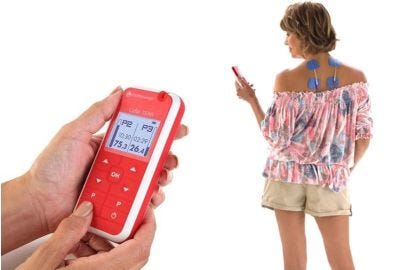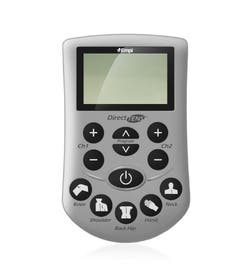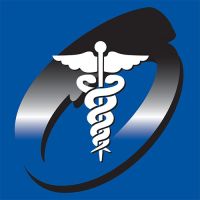If you're living with pain, recovering from surgery, or managing a chronic condition, TENS and NMES devices can offer real relief. These portable electrotherapy units are safe, drug-free, and easy to use — and now widely available for home use.
In this guide, we’ll explain what TENS and NMES are, how they work, and how to choose the right device based on your needs.
What's Electrotherapy?
TENS (Transcutaneous Electrical Nerve Stimulation) and NMES (Neuromuscular Electrical Stimulation) are both forms of electrotherapy. Electrotherapy is a non-invasive treatment that uses carefully controlled electrical impulses to stimulate nerves, muscles, and soft tissues. It plays a key role in modern pain management and rehabilitation by working with the body’s own natural processes to promote healing, restore function, and relieve discomfort.
TENS therapy typically feels like a gentle tingling or buzzing sensation on the skin, while NMES feels stronger — like a series of rhythmic muscle contractions or pulses. Most people find both types of stimulation comfortable, and the intensity can be easily adjusted to your preference.
How Does Electrotherapy Work?
Electrotherapy devices deliver low-level electrical currents through electrodes placed on the skin. Depending on the settings and type of therapy, these impulses can have different effects:
-
Pain Relief: Electrical stimulation targets sensory nerves, interfering with pain signals before they reach the brain (known as the Gate Control Theory). It can also stimulate the release of endorphins — natural chemicals that help reduce the perception of pain.
-
Muscle Stimulation: For muscles weakened by injury, surgery, or immobilization, electrotherapy can activate motor nerves, causing muscle contractions. This helps rebuild strength, improve endurance, and prevent muscle atrophy during recovery.
-
Improved Circulation: Electrical impulses encourage better blood flow to injured tissues, helping deliver oxygen and nutrients needed for healing while removing waste products and reducing swelling.
-
Muscle Re-education: After injury or surgery, muscles may lose coordination or strength. Electrotherapy helps retrain muscles by reinforcing proper activation patterns, supporting a faster and more complete rehabilitation.
-
Maintaining Range of Motion: Regular stimulation can prevent joint stiffness and muscle tightness, helping patients maintain flexibility and mobility throughout the healing process.
What’s the Difference Between TENS and NMES?
TENS (Transcutaneous Electrical Nerve Stimulation)
TENS uses low-level electrical impulses to stimulate the nerves and help block pain signals sent to the brain. It’s often used for both acute and chronic pain, helping users reduce discomfort without relying on medications.
Common uses for TENS include:
-
Back, neck, or joint pain
-
Sciatica and nerve pain
-
Arthritis
-
Post-operative recovery
-
Fibromyalgia
NMES (Neuromuscular Electrical Stimulation)
NMES stimulates the motor nerves to cause muscle contractions. This is especially useful for individuals recovering from injury, surgery, or conditions that cause muscle weakness. It helps maintain muscle tone, improve circulation, and prevent atrophy.
Common uses for NMES include:
-
Muscle re-education after surgery
-
Injury rehabilitation
-
Stroke recovery
-
Preventing muscle atrophy during periods of immobilization
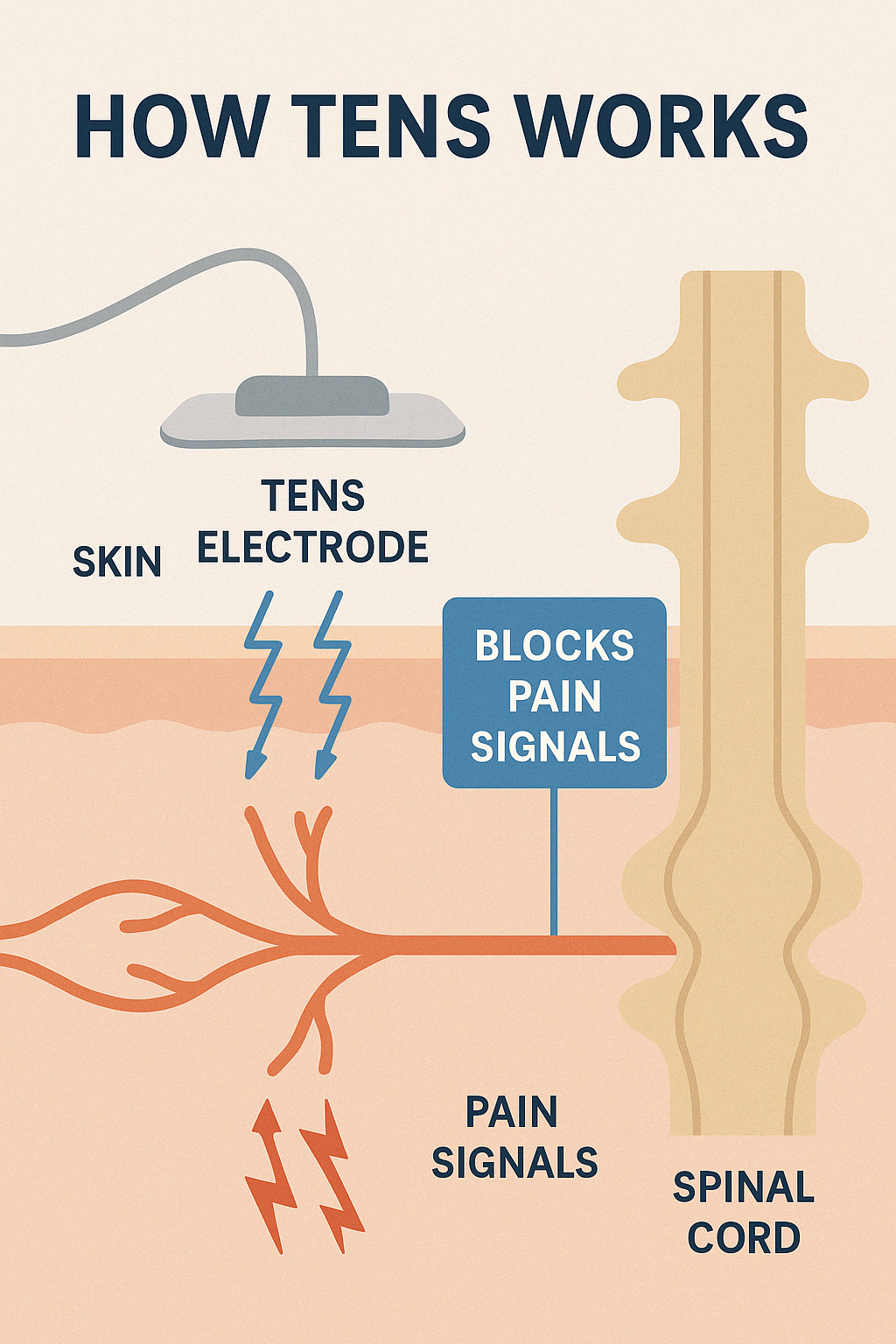

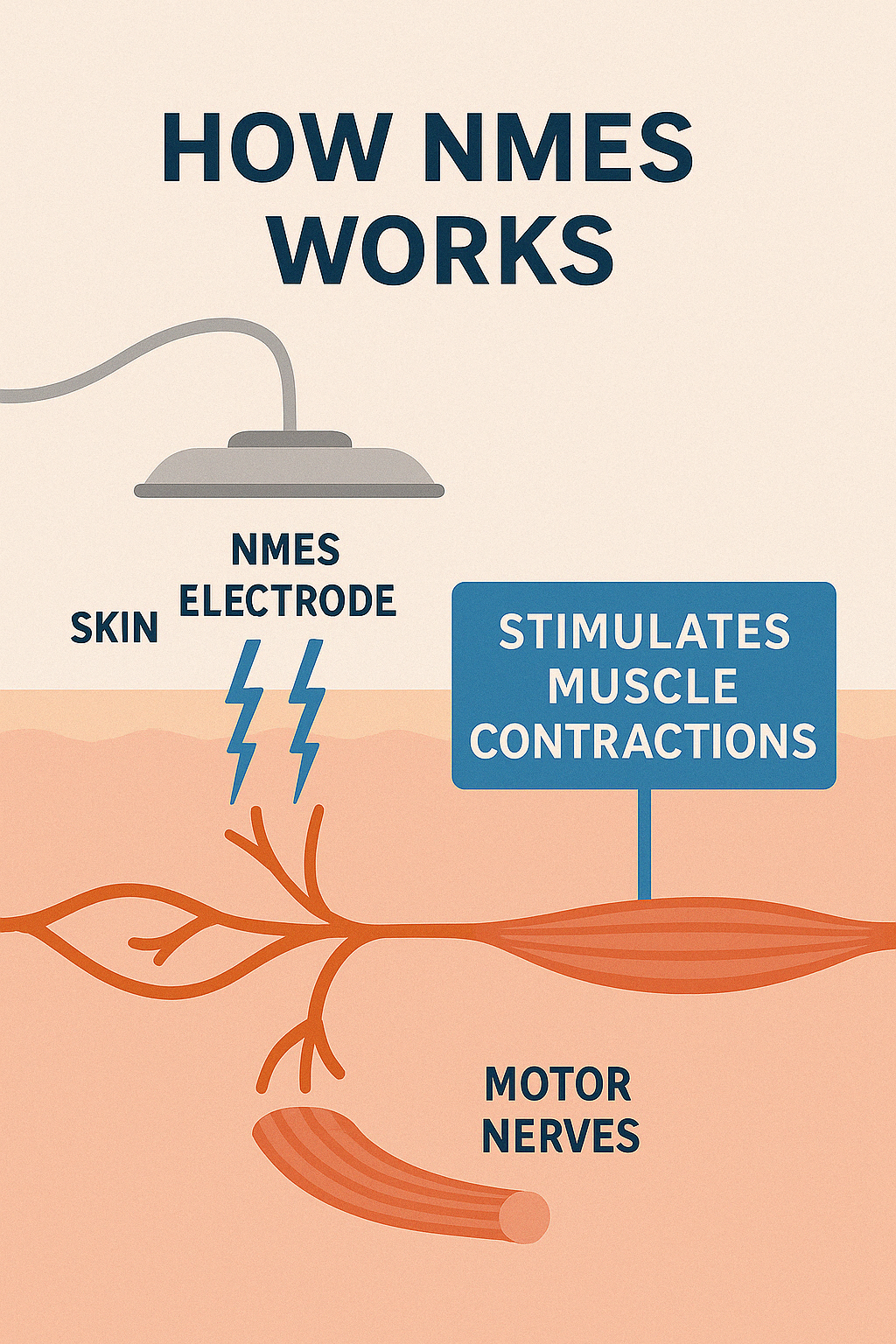

How to Choose the Right TENS / NMES Device
✅ 1. What’s Your Primary Goal?
-
For pain relief only, a TENS device is typically all you need.
-
For muscle strengthening or post-injury rehab, look for an NMES or dual-function unit.
-
If you’re not sure, a combo TENS/NMES device gives you the flexibility to do both.
✅ 2. Ease of Use
Look for:
-
Pre-set programs for common body areas
-
Clear screens or labeled buttons
-
Lightweight, compact design for portability
✅ 3. Customization Options
-
Adjustable intensity levels and pulse widths
-
Dual channels for treating more than one area at a time
-
Built-in timer or lockout functions for safety
✅ 4. Accessories & Pads
-
Reusable electrodes are standard, but quality varies
-
Easy availability of replacement pads
-
Optional wraps, belts, or accessories for targeted application
✅ 5. Safety and Certification
All devices sold at OrthoMed Canada are:
-
Health Canada licensed
-
Designed for safe, at-home use
-
Backed by reputable clinical manufacturers
Featured Electrotherapy Devices Available at OrthoMed Canada
At OrthoMed Canada, we offer a selection of electrotherapy devices designed to meet different needs. You'll find three main types:
-
TENS-Only Devices: Focused on pain relief by targeting sensory nerves.
-
TENS/NMES Combo Devices: Provide both pain relief and muscle stimulation for recovery and strengthening.
-
Clinical-Use Devices: Advanced models with customizable programs, ideal for rehabilitation centers or guided home therapy.
Here’s a closer look at some examples of the TENS and NMES units we offer — each with its own benefits depending on your treatment goals:
1. TENS-Only Devices (Pain Relief)
Chattanooga Easy TENS Kit
Developed specifically for the neck, upper and lower back.
This TENS unit is very easy to use and is designed and approved by physiotherapists to help reduce your pain. It is safe, effective, and unlike oral painkillers, completely free from side effects.
Chattanooga Direct TENS
Straightforward and effective pain relief.
Perfect for users who want simplicity. It offers intuitive controls and built-in programs to relieve common types of pain — such as back, neck, or joint discomfort.
2. NMES & Combo Units (Pain + Muscle Recovery)
Chattanooga Continuum
Dual-function device for pain and muscle recovery.
Offers both TENS and NMES in a streamlined design, with simple navigation, clear programming, and dual-channel operation. Great for users recovering from surgery or needing ongoing muscle stimulation support at home.
Chattanooga Cefar Rehab X2
Professional-grade TENS + NMES with full customization.
Designed for both clinical and home use, this device includes a wide range of pre-set and customizable programs for muscle training, post-op rehab, and pain relief. Visual prompts and clear instructions make it easy to operate despite its advanced functionality.
3. Advanced Clinical Options (For Guided Use)
Chattanooga Wireless Professional 4 Channel Electrotherapy Complete System
Higher-end, clinic-oriented system.
This physiotherapy unit is indicated in the treatment of most musculoskeletal injuries and diseases as well as in postoperative treatment after joint surgeries and in the treatment of several pain indications.
What's the Difference Between Medical and Sports-Focused Electrotherapy Devices?
At OrthoMed Canada, we offer a full range of electrotherapy devices to meet different needs — from pain relief and rehabilitation to athletic training and recovery.
- Medical-focused devices (such as Chattanooga TENS and NMES units) are primarily designed for pain management, post-surgical recovery, muscle re-education, and general rehabilitation. They are ideal for individuals recovering from injury, surgery, or managing chronic conditions.
- Sports-focused devices (such as Compex muscle stimulators) are designed to support performance enhancement, muscle strength, endurance building, and recovery for athletes and active individuals. These devices often offer advanced training programs alongside recovery options.
While both types use electrical stimulation technology, the key difference lies in their focus — whether you're aiming to recover from injury, manage chronic pain, or boost athletic performance, there’s a device suited for your goals. Check out sports focused muscle stimulators here.
When Not to Use TENS or NMES
While TENS and NMES are safe and effective for many people, there are certain situations where use may not be recommended.
You should avoid using electrotherapy devices if you:
-
Have a pacemaker or other implanted electronic device
-
Are pregnant (unless cleared by your healthcare provider)
-
Have active cancer in the treatment area
-
Experience seizures or epilepsy
-
Have broken, irritated, or infected skin where electrodes would be placed
-
Plan to apply stimulation over the heart, front of the neck, or directly over the head
Always consult with your healthcare provider before beginning electrotherapy if you have any underlying medical conditions or concerns.
Tips for Using Your TENS or NMES Device
- Start at a Low Intensity: Always begin with a lower setting and gradually increase until you find a comfortable level. The goal is stimulation, not discomfort.
- Place Electrodes Properly: Follow the device manual or electrode placement guides to ensure you're targeting the correct muscles or pain areas. Clean, dry skin helps electrodes stick better and deliver consistent stimulation.
- Use Fresh or Properly Maintained Pads: Worn-out electrodes can cause uneven stimulation or poor results. Replace them as needed or when they no longer stick well.
- Keep Sessions Consistent: For best results, use your device regularly based on your healthcare provider’s or device manufacturer's recommendations — often 20–30 minutes per session.
- Stay Relaxed During Treatment: Try to stay seated or reclined during use, especially when using NMES, to avoid unintentional strain during muscle contractions.
- Follow Safety Guidelines: Avoid placing electrodes over sensitive areas like the eyes, front of the neck, or directly over the heart.
- Store Your Device Properly: Keep your unit, lead wires, and electrodes clean and protected between uses to extend their lifespan.
Browse our full electrotherapy collection
Our team at OrthoMed Canada is here to help you find the right device for your specific needs. Whether you're managing pain, rebuilding strength, or recovering from an injury, we carry clinically trusted solutions designed for safe and effective use at home.
Our team at OrthoMed Canada is here to help you find the right device for your specific needs. Whether you're managing pain, rebuilding strength, or recovering from an injury, we carry clinically trusted solutions designed for safe and effective use at home.

